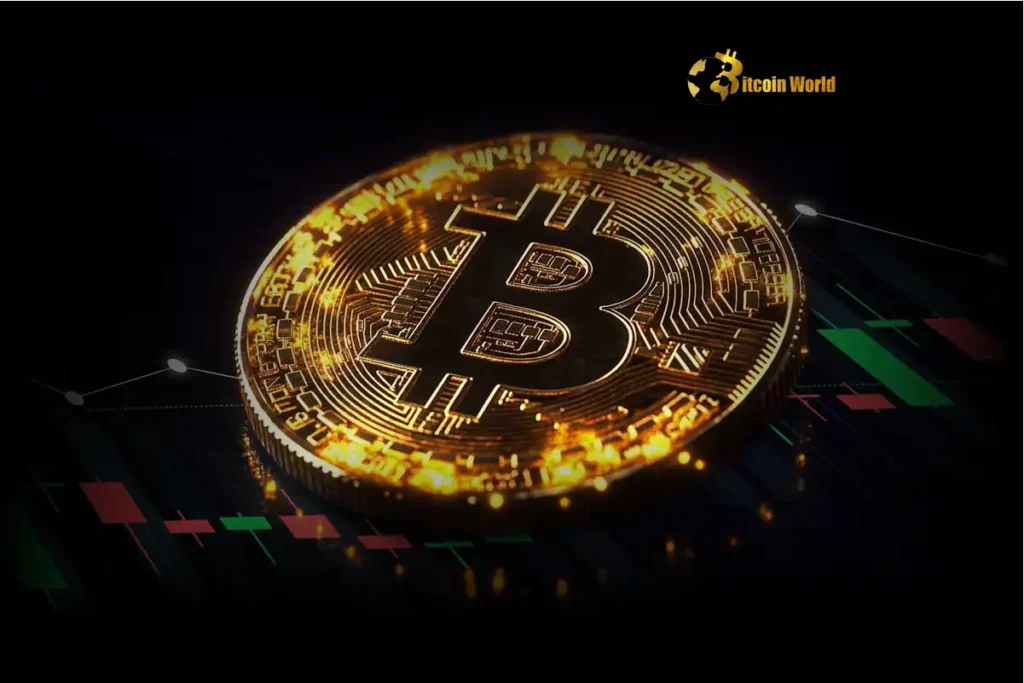Bitcoin Rally: Stealthy Accumulation Signals Powerful Uptrend

BitcoinWorld
Bitcoin Rally: Stealthy Accumulation Signals Powerful Uptrend
Is the current ascent of Bitcoin (BTC) different? As the leading cryptocurrency continues its upward trajectory, pushing ever closer to uncharted price territories, many are asking what’s fueling this latest surge. Unlike previous bull runs often characterized by widespread retail frenzy and high leverage, the picture emerging today suggests a potentially more mature and sustainable foundation for the ongoing Bitcoin rally.
Is This Bitcoin Rally Different? Understanding the Signals
According to recent analysis, the current Bitcoin rally might be marching to the beat of a different drum. A key observation, highlighted by firms like Matrixport, points to a significant lack of speculative fervor from the typical retail crowd. How do we know this? By looking at key market indicators:
Implied Volatility (IV): This measures the market’s expectation of future price swings. Currently, IV remains surprisingly low, sitting near multi-year lows. In past aggressive rallies fueled by speculation, IV would typically spike as traders anticipated massive price swings. Its current subdued state suggests less short-term speculative betting.
Funding Rates: These are payments exchanged between traders holding long and short positions in perpetual futures contracts. Positive funding rates mean longs pay shorts, indicating bullish sentiment, but excessively high rates signal overcrowded long positions built on leverage. Current funding rates are only marginally positive, a stark contrast to the significantly elevated rates seen during retail-driven parabolic moves.
These two metrics, among others, paint a picture of a market where aggressive leverage from smaller participants isn’t the primary driver. This lack of high retail leverage is a crucial distinction from historical price surges, which were often prone to violent corrections triggered by mass liquidations.
Understanding the Absence of High Retail Leverage
Let’s unpack what retail leverage is and why its lower presence matters. Retail leverage essentially allows individual traders to control a large position with a relatively small amount of capital. While this can amplify gains, it also drastically increases the risk of liquidation – where the exchange automatically closes a trader’s position if the market moves against them by a certain percentage. In previous bull markets, a significant portion of the buying pressure came from retail traders using high leverage on platforms offering perpetual futures.
When the market corrected, even slightly, these highly leveraged positions would be wiped out en masse, creating cascading selling pressure that exacerbated the downturns. Think back to the volatility spikes and sudden drops in 2017 or 2021; high retail leverage played a significant role in amplifying those moves.
The current environment, with low IV and modest funding rates, suggests that the leverage currently in the system is either lower across the board or concentrated among more sophisticated players who manage risk differently, or simply that a large portion of the buying is happening without leverage at all.
Why might retail leverage be lower now? Several factors could contribute:
Increased regulatory scrutiny on platforms offering high leverage to retail users in many jurisdictions.
Lessons learned from previous cycles where leverage led to significant losses.
A shift in focus towards spot buying or lower-leverage strategies among retail participants.
Institutional participation potentially overshadowing retail activity in terms of volume.
Regardless of the exact reasons, the consequence is a market structure that appears less vulnerable to sudden, leverage-induced shakeouts.
The Power Behind the Surge: BTC Accumulation by Long-Only Holders
If high retail leverage isn’t the primary engine, what is? The analysis points towards consistent BTC accumulation by long-only holders. Who are these entities? They typically represent investors with a long-term perspective, not looking to make quick profits from short-term price swings amplified by leverage. This group includes:
Institutional investors (e.g., asset managers, hedge funds, pension funds).
Corporations adding Bitcoin to their balance sheets.
High-net-worth individuals (whales).
Long-term retail investors employing a ‘buy and hold’ or ‘dollar-cost averaging’ strategy.
These players are buying Bitcoin outright, taking possession of the underlying asset, rather than just taking leveraged directional bets on its price. Their accumulation removes BTC from the available supply on exchanges, creating organic buying pressure that is less susceptible to sudden reversals based on sentiment or liquidation cascades.
Think of it this way: buying Bitcoin on a spot exchange and holding it is like buying a piece of real estate to keep for years. Using high leverage on futures is like taking out a massive, short-term loan to bet on the daily fluctuations of a stock price. One is focused on long-term value and stability, the other on short-term speculation and risk.
The consistent BTC accumulation by long-only holders provides a stronger, more stable foundation for the rally. It suggests that capital entering the market is committed for the long haul, reducing the likelihood of swift selling pressure unless the fundamental long-term outlook changes drastically.
What This Means for the Wider Crypto Market
While Bitcoin often leads the charge, its dynamics significantly influence the broader crypto market. If the Bitcoin rally is indeed built on solid accumulation rather than shaky retail leverage, what does this imply for altcoins and the overall market structure?
Potential Benefits for the Crypto Market:
More Sustainable Growth: A less leverage-driven BTC market could mean fewer sudden, violent crashes triggered by liquidations, leading to a potentially smoother, albeit perhaps slower, overall uptrend for the market.
Increased Investor Confidence: Evidence of institutional or long-term holder accumulation can bolster confidence among other investors, signaling a maturing asset class.
Altcoin Season Dynamics: While Bitcoin’s dominance might remain high initially, a stable BTC uptrend often provides a runway for altcoins to perform later in the cycle, potentially in a less volatile environment if the ‘stability’ trend extends beyond BTC.
Potential Challenges:
Slower Pace: Rallies driven purely by accumulation might not be as explosive or fast as those fueled by widespread retail FOMO and leverage. This requires patience from investors.
Requires Deeper Analysis: Investors need to look beyond just price charts and understand underlying market structure indicators like funding rates, open interest, and on-chain accumulation trends.
Altcoin Correlation Risk: While the *cause* of the rally might be different, altcoins often remain highly correlated with Bitcoin’s price movements. A significant BTC downturn, even if not leverage-induced, would still likely impact the wider market.
The current setup suggests that the crypto market might be undergoing a subtle but significant shift in its typical bull market mechanics. It’s moving from a market heavily influenced by short-term speculation to one increasingly shaped by long-term investment strategies.
Actionable Insights for Investors
Given this analysis, what should investors consider?
Prioritize Long-Term Strategy: The market dynamics favor a patient, long-term approach (like DCA – Dollar-Cost Averaging) over high-frequency, highly leveraged trading.
Monitor On-Chain Data and Market Indicators: Pay attention to metrics beyond price, such as exchange flows, accumulation addresses, implied volatility, and funding rates to gauge market health and participation.
Understand Your Risk Tolerance: While the market might be less prone to leverage-induced crashes, volatility is still inherent in crypto. Only invest what you can afford to lose.
Diversify Wisely: While Bitcoin leads, understand that altcoin performance may follow different patterns in a market less dominated by retail speculation. Research projects based on fundamentals, not just short-term hype.
This phase of the Bitcoin rally seems less about catching explosive, short-lived pumps and more about participating in a potentially steadier, accumulation-driven climb. For investors focused on sustainable growth, this could be a positive sign.
Conclusion: A More Mature Ascent?
The analysis pointing to a Bitcoin rally driven by long-only holders and marked by low retail leverage offers a compelling narrative about the current state of the crypto market. It suggests that the price appreciation isn’t built on a foundation of speculative froth, but rather on the consistent buying pressure from participants with a long-term vision. While the absence of widespread retail FOMO might make the rally feel less exhilarating for some, it potentially makes it more robust and less susceptible to the sharp, liquidation-fueled downturns of the past. As BTC accumulation continues, this ‘stealthy’ rally could represent a significant step towards a more mature and stable market environment for Bitcoin and the broader crypto ecosystem.
To learn more about the latest Bitcoin and crypto market trends, explore our articles on key developments shaping Bitcoin’s price action and institutional adoption.
This post Bitcoin Rally: Stealthy Accumulation Signals Powerful Uptrend first appeared on BitcoinWorld and is written by Editorial Team







